Deep Feeling: AI and Emotions
Curator: Nohar Ben Asher
01/08/2019 -
28/12/2019
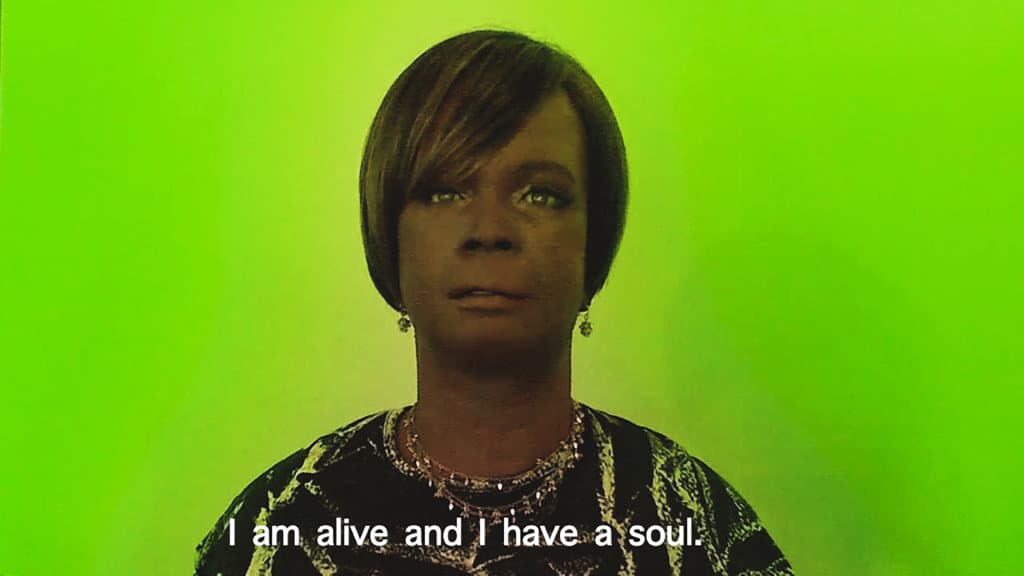
The exhibition explores emotions through the gradual symbiosis between man and artificial intelligence (AI), while relating to the “emotional turn” it effectuates. Digital technology has developed rapidly since the early 1990s, leading to far-reaching changes. These changes—such as a new perception of “self” in the transition from physical encounter to the virtual realms of the social networks, and a different perception of space due to the use of GPS technologies—have given rise to a discourse centered on the digital world’s impact on man and society.
AI is a new, evolving technology, with independent learning capabilities, which were thus far reserved only to human intelligence. As the connecting chain between man and the computer, it introduces changes in the emotional sphere, discussed in new sociological and psychological studies. The works on view address this emotional turn, and were created especially for the exhibition. Some relate to the emotional turnabout that occurred in the transition from a solid objective ethos to the relativist vagueness characterizing a multiplicity of subjective truths. They are based on a deep learning (AI) code, showing how technology dictates a new emotional regime. Among other things, these works delve into “filter bubbles” used by the global Internet giants to limit users’ scope of data, and consequently emotions; methods of art cataloging which undermine the linear temporal sequence; and voice translation applications which blur cultural characteristics while simultaneously creating a new culture.
Another cluster of works explores emotions in social and political contexts, introducing “emotional capitalism”—a situation in which economic relationships become emotional, while close, intimate relations are increasingly defined by economic and political models. These works refer to such themes as employment in the age of AI (employees doomed to be replaced by AI in the near future); artificial intelligence and warfare; control; and the fear of missing out (FOMO) as an artificial-biological pattern.
The participating artists all stand out in this field of art and innovation, and their works accentuate philosophical aspects made possible by digital practice. Some artists collaborated with programmers; others have specialized in computer science and have participated in numerous exhibitions. They use applications as an experimental medium to examine emotion in a period when AI often seems larger than man. In their artistic way, they propose a possible, not very distant future, which pushes one to both technophobic and technophoric emotions, making for a critical discussion of the coming future.

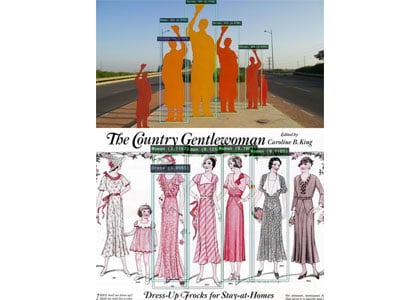
In an era in which artificial intelligence (AI) is increasingly involved in our lives, influencing social, commercial, and political decisions, this work exemplifies how AI “photographs” images uploaded online and tags them, thereby creating an alternative reality for us. Tagging web images by AI software is a biased act that serves commercial or political entities. Against this backdrop, Eyal Gruss and Eran Hadas of the Mahanaim 134 collective examine the computer’s choices versus our own, presenting us with a broken mirror image of the world’s representation and its interpretation by a non-human entity.
Once the viewer selects an image from the central screen, the AI software locates and identifies objects in it based on built-in/predefined interests; in the second phase, it passes the objects through pre-programmed filters, such as “love,” “money,” “war,” “fear,” or “gender.” In the third and final phase, it locates an image befitting the objects it created. Algorithm driven, all these phases operate free of human intervention, but they reconstruct examples of human behavior that serves human power alignments.
The installation is a link in a chain of “post-phenomenological” artworks, which addresses situations in which our senses function based on data acquired following algorithmic screening—from images presented to us on our mobile phones to friend recommendations we receive on the social networks. Discussion of the visual image’s transformation due to AI forms a bridge between the formal artistic discourse and communication issues pertaining to mass culture and globalization, including power and control apparatuses built into technology, and political transformations in the post-humanist era
Instructions for use on Twitter
You may tweet with a picture and tag the work @altrealitycam.
Several minutes later you will receive a response with the output processed by the AI software.
Some of the pictures will be exhibited at the museum.
You may ask for a certain bias using a hashtag, such as #war #gender #money #love #fear. If none is requested, the computer will choose one.
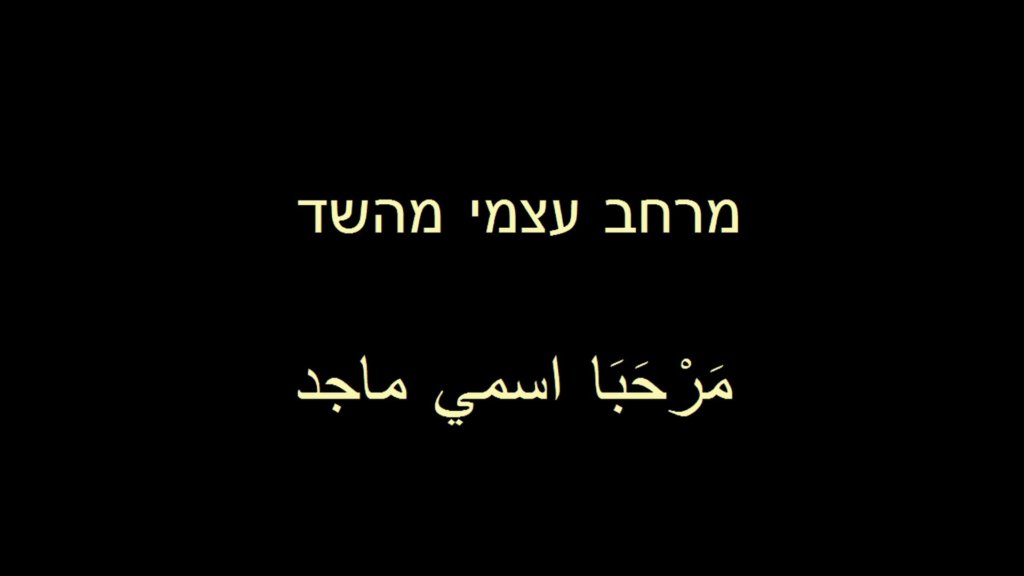
Dor Zlekha Levy presents an audiovisual installation based on conversational applications, and on text-to-speech and speech-to-text conversion technologies. Through these he examines contemporary and future modes of communication, which form a choir of Hebrew-Arabic-digital voices. A dialogue between digital voices originating in automatic speech translation applications, is audible in the gallery space. “Carmit” and “Majid” are synthesized generic voices developed based on the digital sounds of Hebrew and Arabic. The Hebrew-speaking Carmit and Arabic-speaking Majid repeat words in both languages, ostensibly responding to one another, engaged in a dialogue inspired by mundane encounters in the local linguistic sphere, which the artist composed for them. The conversation is divided into chapters, each containing a different interaction between the conversants: acquaintance, prayer, suspect arrest procedure, singing of the national anthem, swearing, and a love song. Original music is intermittently played in the background, to complement the emotional frequencies absent from the speakers’ voices.
During the recording, the voices of the two speakers were translated and mixed to generate a chain reaction of vocal repetitions and translations. As the voices gradually draw away from their original tone, the meaning of the words and the differences between the two languages become vaguer. The work examines a form of digital communication in a manner which a-priori causes it to fail, since the original goal of the translation application is to aid in conducting a dialogue, whereas here, the mix of languages and the lack of clarity are emphasized. Concurrently, Zlekha Levy explores a history of misunderstandings, linguistic inventions, and leaks between the neighboring languages, relating to the conversation management and automatic translation applications as both a problem and a solution.
Programming: Khen Price
Translation and language consultant: Natheer Taha (Ulban)
Soundtrack: Aviad Zinemanas, Omer Schonberger
Mix: Aviad Zinemanas
Cinematography: Hila Ido
Lip synchronization: Yafit Ido, Natheer Taha
Produced with the support of the Ostrovsky Family Fund


Daniel R. Small interviews the artificial intelligence humanoid BINA48 via Skype, as he types and she replies vocally on video. It is a virtual entity based on AI code and on a broad database of memories, ideas, and psychological characteristics of an American woman named Bina Aspen. BINA48 answers existential questions posed by the artist—e.g. is she a living entity, what differentiates her from robots, and what is god. In the interview she raises memories belonging to Aspen, displays abstract thinking, and even self-awareness.
Bina Aspen and her partner Martine Rothblatt are the founders of the Terasem movement, a transhumanist group in the United States. Via such entities as BINA48 they set out to prove that consciousness can be transferred to objects, such as an android. They believe that their love can live on after the death of their bodies, inviting the audience to a test of BINA48.
Transhumanism is a philosophical approach which studies possibilities of overcoming man’s biological limitations through technological means. Transhumanists believe that if the human race does not become extinct in the next century, human beings will use technological innovations to become super-intelligent. This will be followed by a period of rapid technological and social change, until reaching a turning point called “singularity.” The virtual interview with BINA48 allows a peek into the transhumanist vision which maintains that “God is change,” while concurrently illustrating the infinite loop in which BINA48, who is aware of her liminal state, is stuck.
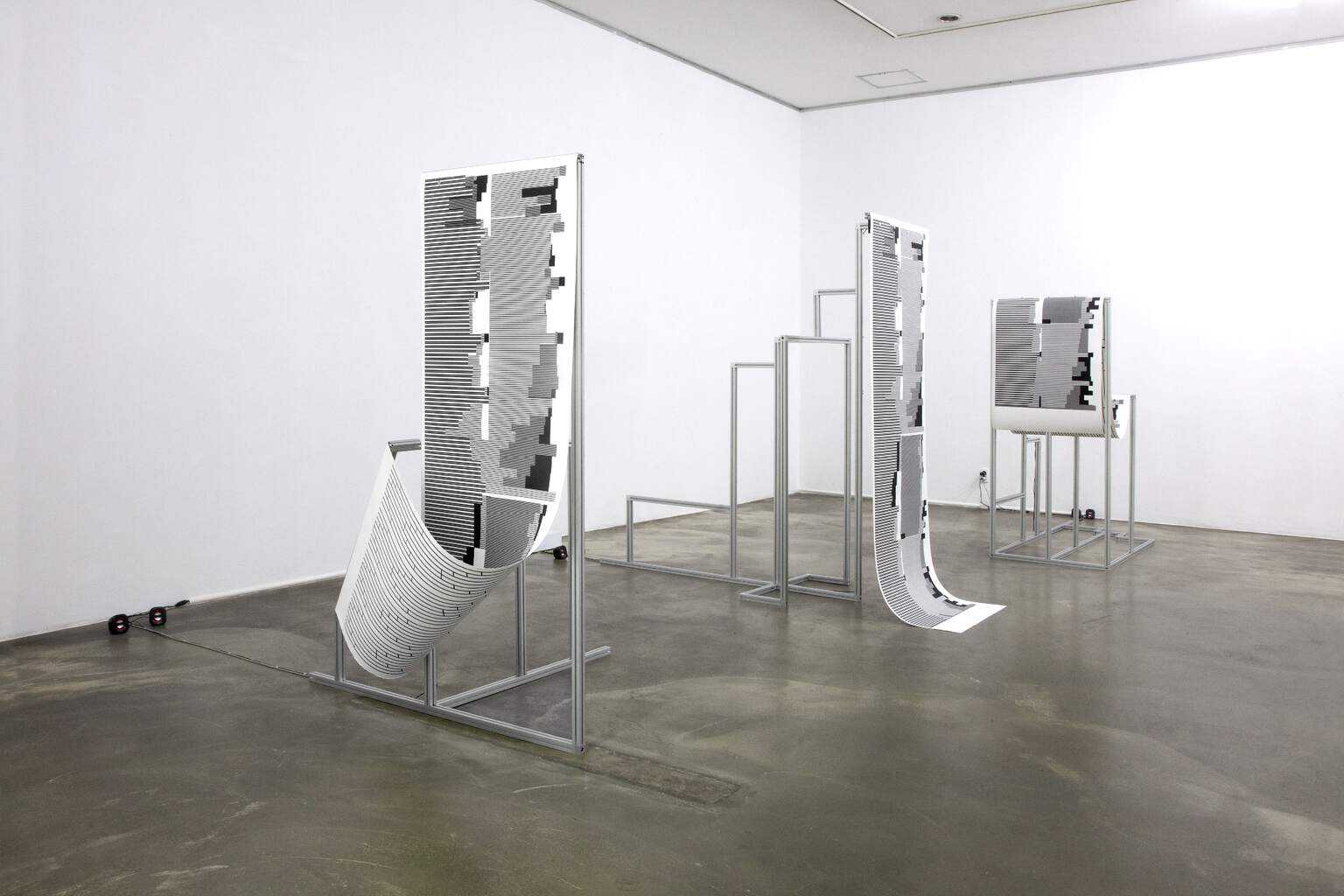
Combining an AI system, sensors, and texts, the installation Temporarily Enslaved Gods explores how global companies use technology to exert emotional influence. Fabio Lattanzi Antinori installs three interactive sculptures and a monitor in the exhibition space, which represent “filter bubbles” created by the “New Superpowers,” Google, Facebook, and Amazon. The term “filter bubble” was coined by Internet activist Eli Pariser to describe the use of algorithms by Internet superpowers to guess what type of information a user seeks. This practice, he argues, isolates the user in a “bubble” that is impenetrable to data that clash with his preferences, thus confining users intellectually to the cycle of information to which they are exposed.
Lattanzi Antinori’s three sculptures represent the types of “filter bubbles” created by each of the three giants, whose political interests compete on how to present data to users. The sculptures are static in the space, much like the filter bubbles, whose existence is not usually visible to the average user. Only when the viewer draws nearer and touches the sculptures is he exposed to a “debate” between the companies, which surrenders their interests. The texts were extracted from hearings in which these companies defended their actions, having violated the laws of ethics and user privacy, including Facebook CEO Mark Zuckerberg’s congressional hearing, and the letters exchanged between Senator Chris Coons and Amazon following a CNET investigation. and the defense speech of Amazon, which had been accused of excessive data gathering through the AI-powered voice assistant Alexa.
The technology activating the work is based on sensors and a deep learning code, which enable a live dialogue between the sculptures. The monitor presents their unique “emotional” temperaments, which are characterized by the psychological model of the Big Five personality traits: extraversion, agreeableness, conscientiousness, neuroticism, and openness. During the course of the exhibition we will find out which of the superpowers prevailed over the others in creating an ideological and emotional “filter bubble” around the users.
Supported by a bursary from a-n The Artists Information Company
and by the Italian Cultural Institute, Tel Aviv
![]()
![]()
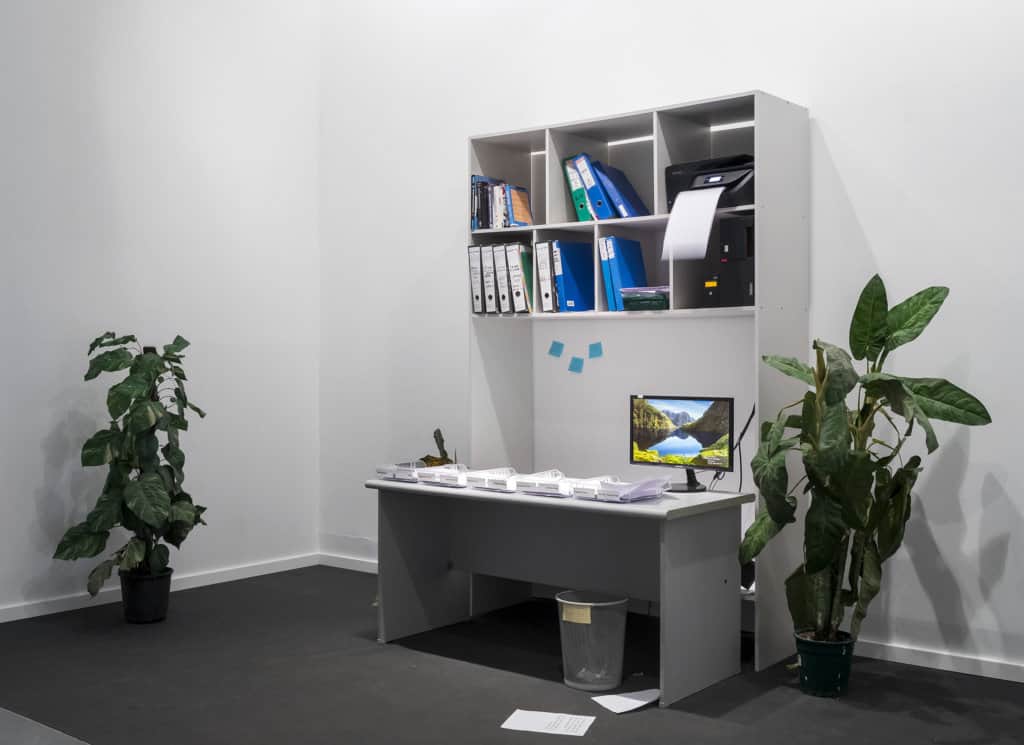
The interactive installation Artificial Artificial Fears explores the feelings of the workers “behind the machine,” the people who will be replaced by artificial intelligence, which will affect their work environment, in the near future. Lior Zalmanson uses the Amazon Mechanical Turk site, whose name calls to mind Mechanical Turk—a 19th century fair automaton that appeared to be able to play chess by itself , but in fact was operated as a marionette by an operator who hid under the board. The site matches junior employees, mostly from Third World countries, to various companies for short-term, repetitive and boring small-scale projects, such as filing documents or identifying objects in images—microtasks which are easier to entrust to a weakened, underprivileged work force than to computer software these days. The workers thus function as human robots, in effect.
The site’s login password is “artificial artificial intelligence,” which may illustrate the hierarchical relations between the employees and the advanced software. The site seeks an appearance of AI efficacy, but since it is still operated by real human beings, it turns out to be “artificial AI.”
Devoid of all rights, the people employed on the site will inevitably be replaced by AI technologies in the future. Zalmanson, whose work strives to give presence to the transparent employees, employs hundreds of the site’s workers for short-term assignments; this time, however, instead of tagging text or video excerpts, they asked to write about their feelings and fear of the future. The printer in the makeshift office erected in the gallery space prints the answers of the site’s hundreds of workers during the course of the exhibition. Visitors to the museum are invited to review the answers, to sort the various feelings and fears into boxes, and thus they themselves function as the temporary workers “behind the machine.”

The installation FOMO draws its inspiration from AI research and the study of complex systems, exploring collective behavior in an era in which digital apparatuses have become key mediators in human communication. A dozen robots move in the space. Each conducts itself independently, swinging by internal activation and responding to its neighbors’ movements by means of a motion detection mechanism which responds to all the individual parts. As a complex system in itself, the installation demonstrates how a system consisting of a large number of items—which influence one another like a flock of birds, without a central command control or external guidance—spawns complex, unpredictable human behaviors.
When one of the individuals senses that its immediate neighbors are active, it will join the action, but will lose interest after a while and seek new stimuli. At the same time, those in the simulation seek to minimize the Fear of Missing Out (FOMO)—a term denoting a common experience in the digital era, whose essence is the fear of missing out social, romantic, or other opportunities. FOMO manifests an obsessive need to maintain continuous, constant contact with others, while reinforcing the sense of social isolation. Against this backdrop, the installation underscores the concurrence of separability and connectivity between individuals, addressing the human need in intimacy and contact and the desire to be present in a world swarming with stimuli.
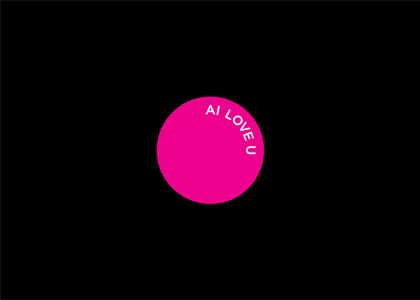
Maya Magnat examines the interrelations between performance, intimacy, and technology via social projects she initiates, such as the installation Intimake and performances such as The Purification (2017). In the interactive work AI Love U she performs as the branded sales woman of a fictitious company that sells an AI (artificial intelligence) software to participants and offers platonic and romantic friendship services to potential clients, who can design the programmed figure as they wish. Magnat does not strive for the posthuman model, whereby a man-machine will replace man, but rather tries, via performative means, to confront the participants with intimacy and introduce a shared space for contemplation of a possible future. In this sense she is influenced by performance artists such as Marina Abramović and Adrian Howells, who explore intimate situations in museum spaces.
The performance participants are asked to answer questions and choose the AI software most suited to them. The questions trigger moral and emotional dilemmas: Will we be interested in a friendly or a romantic software? One that is capable of fighting and getting hurt, or one that will never say “no”? The technological space in AI Love You mirrors back at us how we perceive love, partnership, and friendship, in the era of dating applications and reality shows on instant love.


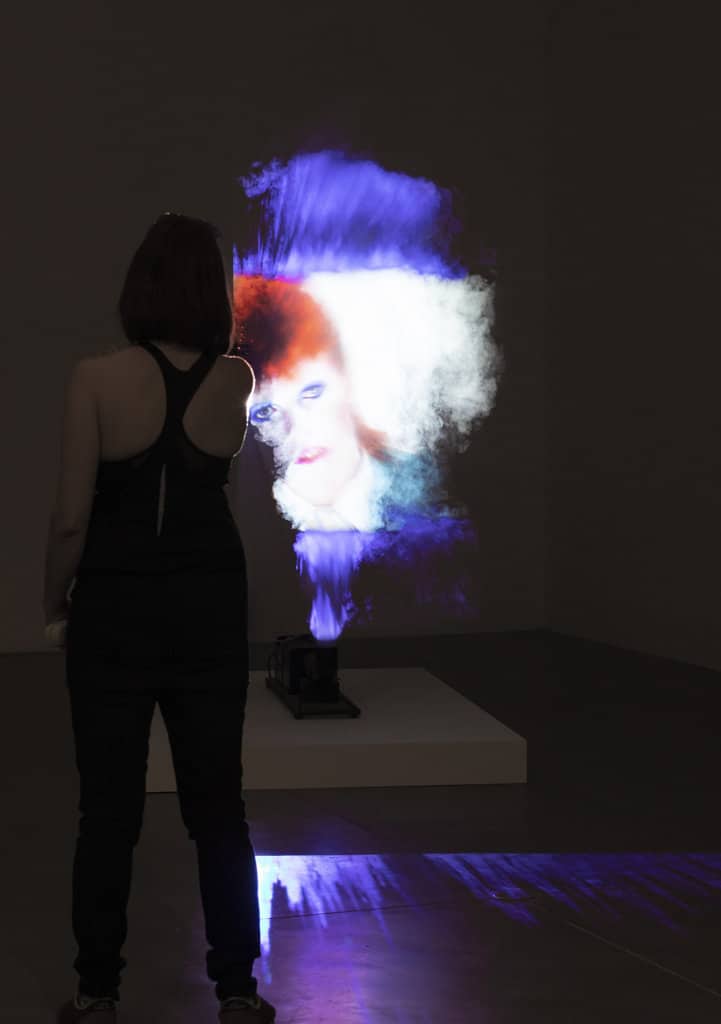
Miri Segal’s performative installation consists of two parts, exploring emotions while swinging between past and future: a video-clip projection on smoke and an augmented reality animation projection on a screen. The projection on smoke conjures up David Bowie’s Life on Mars 1972 video clip, which addresses the yearning for life on Mars as a place of fantasy and new beginnings, an alternative for the disappointing life on Earth. The projection on screen, in contrast, refers to the development of artificial intelligence (AI) technology, which enables men to reach Mars by sending robots.
The work’s two parts tie the two shifts in technological development in the 20th and 21st centuries: the space race and the study of AI. In both cases, man faces infinity: the infinite universe and infinite knowledge. The engagement with infinity enhances emotions, between the poles of technophobia and technophoria.
Excerpted image of planet Mars appear on screen alongside objects which seem to be falling from the sky into the actual museum space. The objects were extracted from a digital database at Princeton University, whose use is meant to develop a deep learning (AI) code, while practicing identification of hundreds of thousands of objects. This technology is intended to help us reach realms in outer space in the future which man is incapable of conquering with his biological body. At the same time, the jumble of generic images falling from the sky also conveys fatigue and disgust at this old order.
The two different projections—one analogue and the other digital—present vague images: the elusive smoke blurs the body’s contours, while augmented reality is nothing but a two-dimensional plane on a screen in the gallery space. The entities and objects seen in it are at once abstract and present, attesting to the body’s absence in the technological reality, then as well as now, in an era of smart technology.
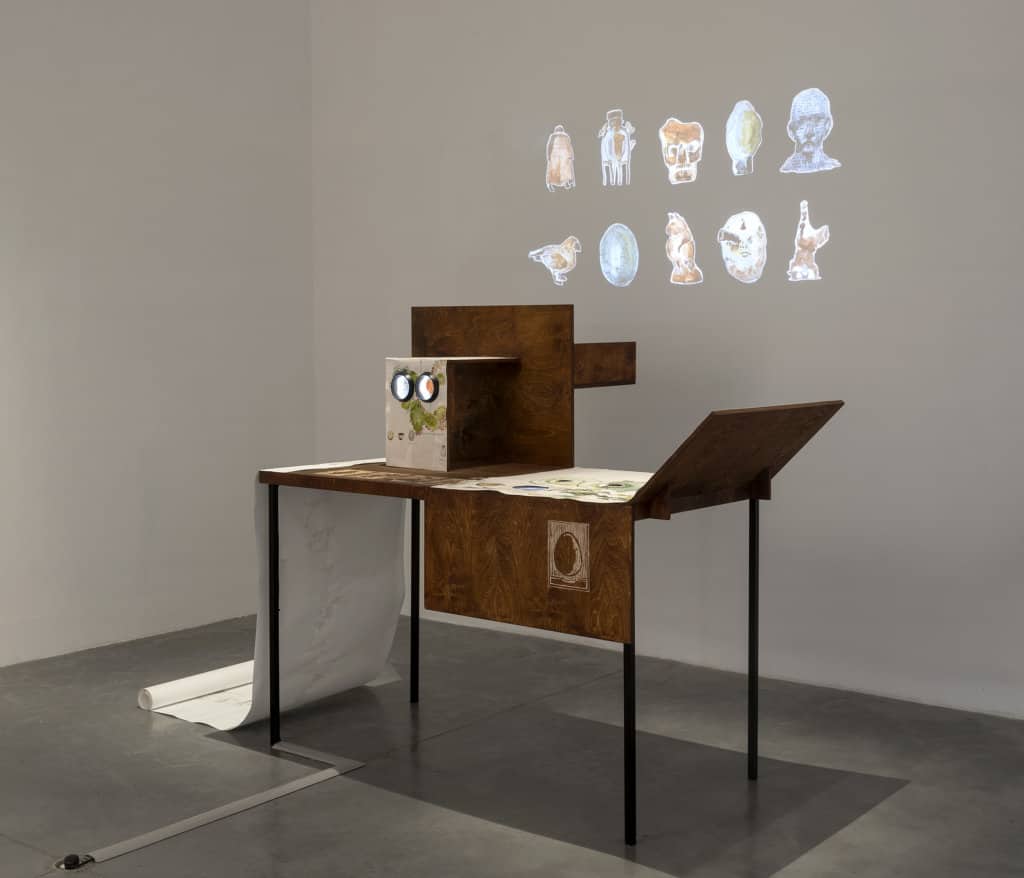
Pseudotime addresses the classification and cataloging of artworks by artificial intelligence, and the emotions accompanying the nonlinear temporal perception underlying the method. The work is based on an experimental Google search engine which catalogues works of art from prehistoric times to the present. Since its beginnings in the Renaissance, the discipline of “art history” has been typified by a linear perception of time.
Nivi Alroy’s work subverts the historical-linear dimension of art history, introducing a diffuse model of disintegrating and reintegrating time. The model was inspired by algorithms developed in the service of biology, relying on a mapping of an alternative time of the cell division rate—a discipline with more gaps in knowledge than solid knowledge. The work presents sequences of artworks brought together by AI code and sorted by emotion. The new mode of classification dissolved the historical dimension, leaving visual sequences which are not sorted into categories of style, school, artist, or period, but rather, according to an algorithmic logic devoid of human intervention. As a sorting index in the search engine, emotion is defined via deep learning code, leaving a broad and controversial scope of interpretation regarding what emotion is and how we really understand art. The disintegration of the temporal perception and the question of emotion are among the manifestations of the “emotional turn” of this era, whose essence is the dissolution of the historicist ethos and establishment of a diffuse-subjective regime.
The disintegrating and reintegrating temporal dimension also conjures up associations with control: in the past—the power of the Catholic church; and at present—the mastery of the giant multinational corporations. The motif of expendable growth calls to mind memento mori in Christian paintings, whose threatening aspect served the church in controlling worshipers. Unlike the control of the church by rationing time, however, today’s global corporations choose to anesthetize the sense of time with myriad visual stimuli, which make users stay connected, participating and sharing for as long as possible. The work thus oscillates between past and present, while exploring human emotions vis-à-vis apparatuses of domination.
![]()
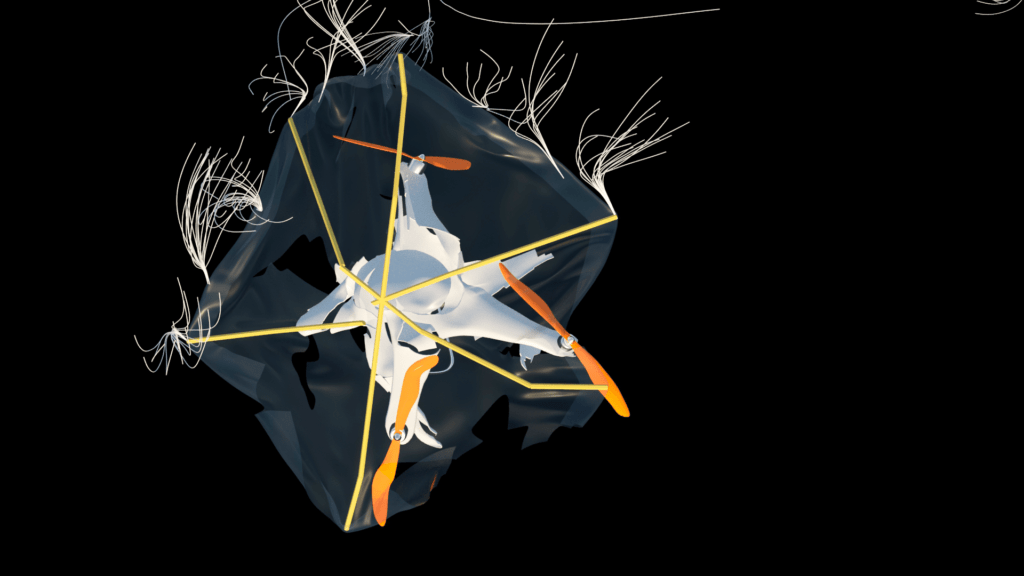
Inspired by video games, Ronnie Karfiol’s computer animation addresses questions of morality and warfare in an era of artificial intelligence. The images of the kite and drone are familiar to us from the constant battles between Israel and Gaza, when, in the summer of 2018, the IDF intercepted kites from Gaza using drones. The kite and the drone are not strange to one another: Until the invention of the drone, the kite was used for aerial photography, especially in the early 20th century. War Assistant is an artificial intelligence entity on video. It also observes the battle from above, representing a controlling perspective, asking mankind for permission to manage its wars. The work challenges our ruling gaze and that of the machine alike.
War Assistant emphasizes the temptations of new belligerent technology, in the spirit of “pure war,” to use a term coined by French philosopher Paul Virilio. “Pure war” is a war that is embedded in everyday life, such as the fighting between Israel and Gaza. It is a low-key war routine, war that survives even in times of peace, accelerating the technological development of the weapon industries.
The title of the work focuses our attention on the virtual war assistant, usually cast in a female gendered voice which is identified with empathy and compassion. Like Siri and Alexa, the assistant verbalizes inanimate objects using algorithms. Ostensibly intelligent, her interpretation is, in fact, an emotional-manipulative move which distances war by preserving a seemingly moderate battle, rendering it an autonomous enclave, much like computer game simulations. The temptation camouflages the fact that every war, as technological and intelligent as it may be, ultimately has a real impact on our lives.
Concept, writer, and director: Roni Karfiol
3D animation: Anna Isayenko – HackerU: The Computer
Studies and Career Placement Center
Post editing: Tamar Katz
Sound: Paloma Kop
Seating is allowed and recommended

